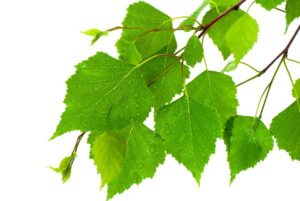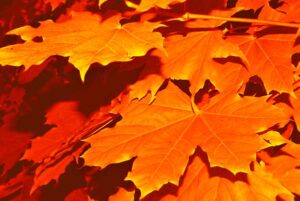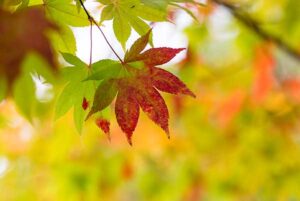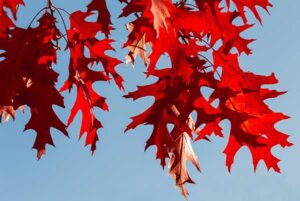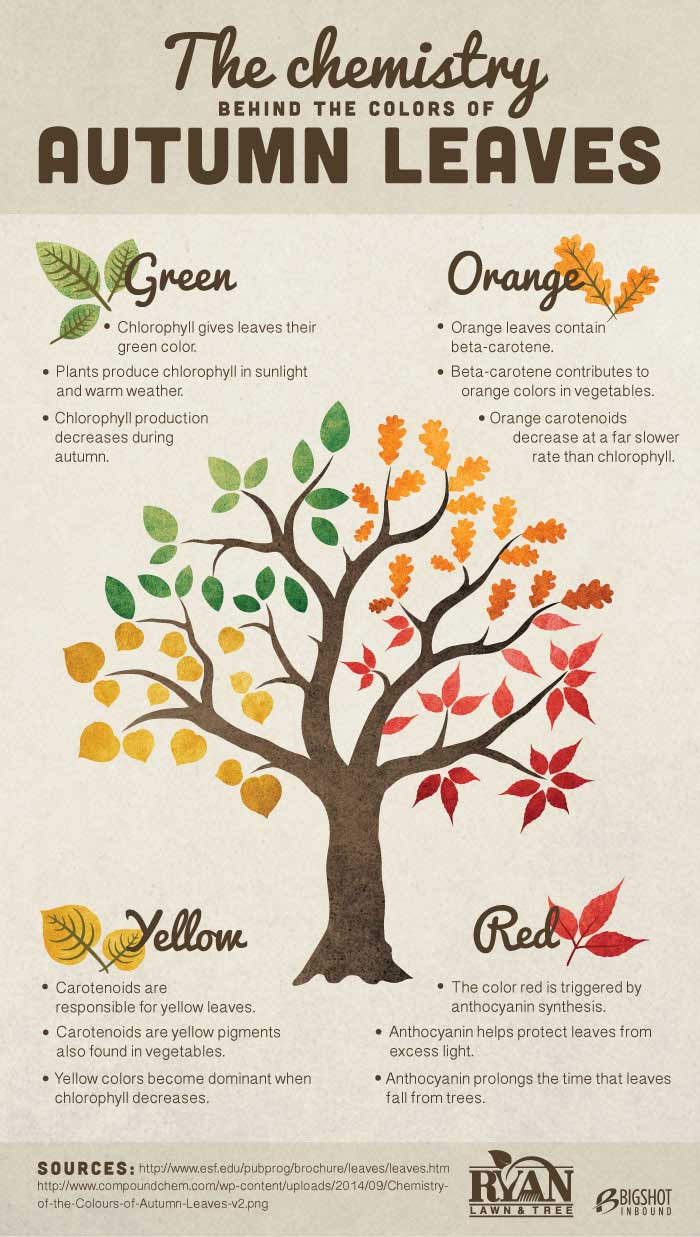Why Do Leaves Change Color in Autumn?
Every fall, people all over the world are captivated by the beauty of autumn leaves. The vibrant reds, oranges, and yellows create a stunning display that is truly one of nature’s wonders. But what is the science behind these stunning colors?
The secret lies in the chemistry of autumn leaves. As the seasons change, the trees begin to prepare for winter by breaking down the chlorophyll in their leaves. Chlorophyll is the green pigment that allows plants to photosynthesize, or make food from sunlight.
As chlorophyll breaks down, the other pigments in leaves become more visible. These pigments are carotenoids and anthocyanins. Carotenoids, such as beta-carotene are yellow, orange, and red pigments that are also found in carrots, pumpkins, and tomatoes. Anthocyanins are red and purple pigments that are found in berries, grapes, and other fruits and vegetables.
The type of pigments that are present in leaves will determine their colors in the fall. For example, leaves that contain high levels of carotenoids will turn yellow or orange, while leaves that contain high levels of anthocyanins will turn red or purple. Some leaves may even contain a mix of both pigments, resulting in a mix of brown, burgundy, and gold leaves.
The Role of Chlorophyll
Chlorophyll is a green pigment that is essential for photosynthesis. Photosynthesis is the process by which plants use sunlight, water, and carbon dioxide to produce food.
Chlorophyll molecules absorb red and blue light from the sunlight that falls on leaves. Light energy is used to split water molecules into hydrogen and oxygen. The hydrogen atoms are then used to produce glucose, which is the plant’s food source.
The oxygen atoms that are produced during photosynthesis are released into the air. Plants help to clean the air and produce the oxygen that we breathe, which is why they are so important to our planet.
The Role of Beta-Carotene
Beta-carotene is a carotenoid pigment that is responsible for the orange and yellow colors of many fruits and vegetables. It is also present in leaves, but it is masked by the green color of chlorophyll during the spring and summer.
In the fall, as chlorophyll breaks down, beta-carotene becomes more visible, giving the leaves their yellow and orange colors. Beta-carotene also plays an important role in protecting plants from sun damage. It absorbs harmful UV rays and prevents them from damaging the plant’s cells.
The Role of Carotenoids
Carotenoids are yellow, orange, and red pigments that are found in plants and algae. They play an important role in photosynthesis by absorbing light energy and transferring it to chlorophyll. Carotenoids also protect plants from sun damage by absorbing harmful ultraviolet (UV) rays.
Carotenoids are always present in leaves, but they are masked by the green color of chlorophyll during the spring and summer. As the chlorophyll breaks down in the fall, the carotenoids become more visible, giving the leaves their yellow, orange, and red colors.
The Role of Anthocyanins
Anthocyanins are red, purple, and blue pigments that are found in plants and fruits. They play an important role in protecting plants from sun damage and attracting insects for pollination. Anthocyanins are also responsible for the red and purple colors of many fruits, such as berries and grapes.
Anthocyanins are not always present in leaves. They are produced in the fall when chlorophyll breaks down and sugar levels in the leaves increase. The production of anthocyanins is also influenced by environmental factors such as temperature and sunlight.
Factors that Affect the Color of Autumn Leaves
There are a number of factors that can affect the color of autumn leaves, including:
- Temperature: Colder temperatures in autumn trigger the production of anthocyanins, which give leaves their red and purple colors.
- Sunlight: Leaves that are exposed to more sunlight will produce more anthocyanins, resulting in brighter red and purple colors.
- Soil type: The type of soil that a tree is growing in can also affect the color of its leaves. Trees that are growing in acidic soil are more likely to produce anthocyanins, while trees that are growing in alkaline soil are more likely to produce carotenoids.
- Tree species: Different tree species have different levels of carotenoids and anthocyanins in their leaves. This is why some trees, such as maples and oaks, are known for their bright red and orange colors in the fall, while other trees, such as birch and hickory, tend to turn yellow or brown.
Autumn Leaves the Colorful Chemistry Lesson
As you can see, the chemistry of autumn leaves is a complex and fascinating process. The interplay of chlorophyll, beta-carotene, carotenoids, and anthocyanins is responsible for the stunning array of colors that we see in the fall. These colors are not only beautiful, but they also serve an important purpose. They help to protect plants from sun damage and attract insects for pollination.
Enjoy the Beauty of Autumn Leaves
One of the best ways to enjoy the beauty of autumn leaves is to go for a walk or hike in the woods. Be sure to look up and admire the colorful leaves on the trees. You can also collect some leaves to take home and press or display in a vase.
Need Some Help With Your Autumn Lawn & Tree Services?
Autumn is the perfect time to prepare your lawn and trees for Winter. By taking some simple steps now, you can ensure that your yard will look its best next spring.
If you need help with any autumn lawn and tree care tasks, your RYAN lawn care professionals are here to help! We offer a variety of services, including aeration, fertilization, pruning, and so much more. Contact us today for your Free Estimate!

